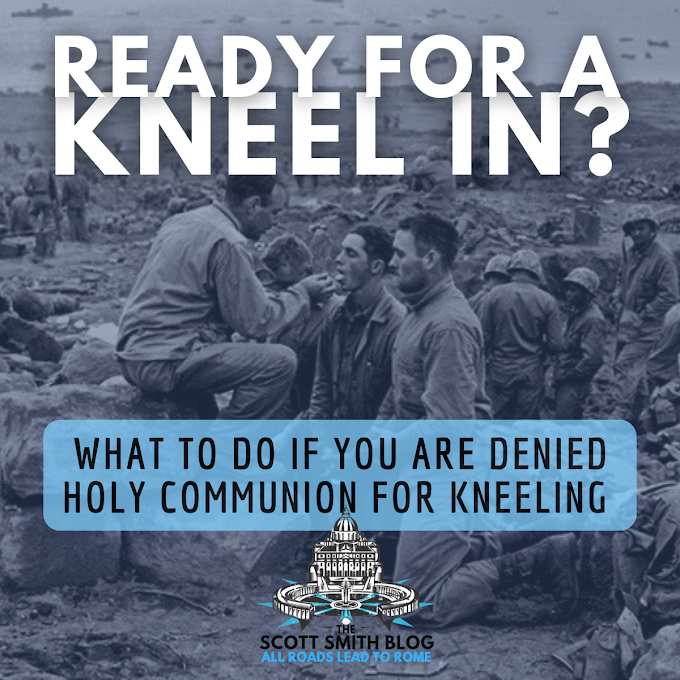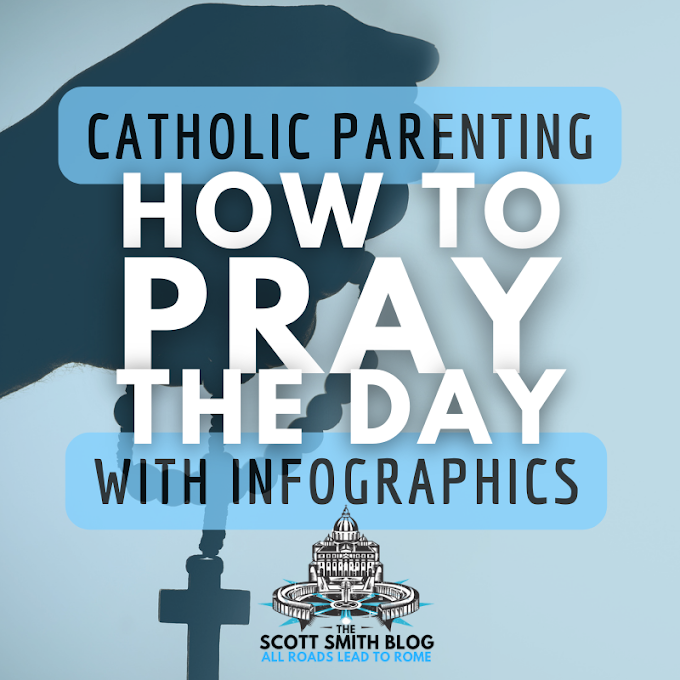Did you see the recent headlines about an archaeological discovery in Israel near Jerusalem? Here's the story reported at CNN, Fox News, and the New York Post: "Huge 9,000-year-old Stone Age settlement, one of the largest in the world, discovered in Israel"
The following video from the Israel Antiquities Authority shows the scope and magnitude of the unearthed ancient city as well as an interview with Dr. Jacob Vardi, the Excavation Director:
What Does this 9,000-year-old Stone Age Settlement Tell us About Biblical History and Abraham?
As you will see below, modern scholars try to make Israel a very small place without any connection to international trade and the rest of the world.One of the main attacks on the Biblical account of Abraham is that Abraham's caravan included camels. Israel was such a backwater, insignificant place, modern scholars argue, that the camels from modern-day Pakistan and Afghanistan would never have traveled as far as Israel before the time of Abraham. Scholars thus conclude that the entire Biblical account of Abraham is fictional.
That poor logic aside, what does this 9,000-year-old Stone Age settlement near Jerusalem tell us about the Israel of Abraham's time, some 5,000 years later?
Was ancient Israel truly such a small, unimportant place? If so, why was one of the largest Stone Age settlements ever found located there?
Also, how could there be proof of extensive international trade found in Israel 5,000 years before Abraham arrived? Check out this description of the artifacts found in the Stone Age settlement:
Other unearthed objects suggest that inhabitants enjoyed trade or contact with the outside world. Sea shells from the Mediterranean and Red Sea were among the discoveries, as was obsidian -- a type of volcanic glass -- from Anatolia, in present-day Turkey.
This clearly indicates that Israel was located on ancient international trade and caravan routes thousands of years before Abraham, as will be discussed in greater detail below. Do modern scholars really expect us to believe that these international trade routes through the Middle East were entirely devoid of camels for 5,000 years?
Want to read more about the archaeological evidence that points to Abraham being a very special historical figure? See below ...
The Historical Abraham
The typical depiction of Abraham as a poor desert nomad is likely completely wrong. The archaeological and even the Biblical evidence presents a very different picture.It is possible that Abraham was actually a much more interesting and important figure, even before he forever altered the course of world history.
You're not likely to hear this part of Abraham's story, though ...
Rather listen to this article? I recently did an interview with Brother Andre Marie on the Veritas Radio Network on the "Modern Attack on Abraham" - Listen to it here!
This article covers all of the following topics:
- When Did Abraham Live? When was Abraham born?
- Modern Attack on the Timeline for Abraham and the Exodus
- Another Modern Attack: Is the mention of camels anachronistic in the account of Abraham?
- Abraham's Timeline [chart] with Abraham's Ages
- Who was Abram/Abraham?
- The City of Ur during Abraham's Time
- Cyrus Gordon & David Noel Freedman: Abraham, the Merchant Prince
- William F. Albright's View: Abraham and the Great Caravans
When Did Abraham Live? When was Abraham born?
First off, when did Abraham live? What were the years of Abraham's life? Working backward, we can trace the chronology of Abraham's life through the text of Genesis and Exodus.Let's start with the Dedication of the Temple in Jerusalem. According to 1 Kings 6:1, this occurred in the fourth year of King Solomon's reign or 966 BC. 1 Kings 6:1 also states that this was the 480th year since the Exodus from Egypt. The Exodus would have occurred, therefore, in 1446 BC.[1]
There were 430 years between Jacob and his sons entering into Egypt and the Exodus of the Israelites out of Egypt. This takes us to 1876 BC.
There were another 215 years between Jacob entering Egypt and Abraham entering the Land of Canaan, according to Genesis. [For a more detailed calculation see Footnote #1] This takes us to 2091 BC.
Abraham entered Canaan when he was 75 years old, so 75 years before would be 2166 BC, the birth year of Abraham in Ur.
The Modern Attack on the Timeline for Abraham and the Exodus
This is something you ought to be aware of ...Unfortunately, many modern scholars completely disregard the text of Scripture when constructing a timeline for Abraham and the Exodus. Most attempt to place the writing of Genesis and the rest of the Pentateuch much, much later than stated by the historical sources. This is an attempt to undermine the history of the Jewish people and Scripture, itself.
 |
| Gotta love these History Channel "experts" |
Jean-Louis Ska, S.J. describes one such theory in Introduction to Reading the Pentateuch, which is also referenced in the "Abraham" article on Wikipedia, unfortunately. [2] Ska states "we can affirm that the book of Genesis was intended as a reply" to the land dispute between rival claims to the Promised Land following the exile.
Did you catch that? The account of Abraham was added in a thousand years after the fact. Why? To settle a 6th century BC land dispute. A land dispute which occurred almost 1500 years after Abraham's death.
The support for this theory? A couple verses in Ezekiel.
Up until the last centuries, it was nearly unanimously held by historians and theologians alike that the Biblical timeline was correct. Why have scholars suddenly abandoned this theory? What is their evidence?
Camels. Anachronistic camels, to be more specific. In Genesis 24 and elsewhere, Abraham is described as possessing camels.
Unfortunately for Abraham, there were no domesticated camels in the Middle East until the 10th century BC, at least according to one 2014 study. This would mean Abraham's camels were one thousand years out of place.
That the fate of thousands of years of camels should be in the hands of a few copper mining camels seems unfair. That's a huge extrapolation. Regardless, is there any other evidence that would refute this?
Easily. Depictions of domesticated camels have been found on ancient Egyptian artifacts dating back dating back to the First Dynasty (3100-2850 BC) and perhaps even further.
For example, a petroglyph dated to the Sixth Dynasty (c. 2345-c. 2181 BC), i.e. just before Abraham's birth, was found near Aswan and depicts a man leading a dromedary camel.[3] (Ripinsky, p. 139).
There is also this artifact from the lands Abraham would have traveled through to reach the Promised Land. This is a Syrian cylinder seal ca. 1800 BC which depicts two figures riding on a two-humped camel: [4]
 |
| Syrian cylinder seal depicting the riding of a Bactrian camel, ca. 1800 BC. Walters Art Museum. |
 |
| Metropolitan Museum of Art, New York. Credit: TM Kennedy |
Notice that the camel is wearing some sort of harness. Wild camels typically don't wear harnesses, right? Again, this shows that camels were domesticated in regions adjacent to Ur, Abraham's home, in Abraham's time.
Isn't it interesting that this figurine is made, of all things, of copper? It was the camels used in the mining of copper that supposedly disproved the existence of domesticated camels during Abraham's time.
There's a lot more that could be said in this section. There is other evidence cited by the critics of the Biblical timeline, such as different forms of God's name, duplicative accounts of events, etc. These also do not hold much water ... far less than a camel, anyway. I'll be covering this in greater depth in a subsequent article.
The Ages of Abraham - Abraham's Timeline
Abraham's entered into the Land of Canaan when he was 75. Here's a look at the timeline of Abraham's life between entering the Promised Land and his death.Who was Abram / Abraham?
Abraham was born "Abram." Abram didn't become Abraham until he was 99 years old, when God changed his name to "Abraham," meaning "a father of many nations" (Genesis 17:5).Abram was a tenth generation descendant of Noah, through his father Terah. Terah was the father of three sons: Abram, Nahor, and Haran. Haran is better known for his son, Lot.
Abram married Sarah, his half-sister, who was then known as Sarai. Sarah was also barren. Abram departed for Canaan along with his father, wife, and nephew, Terah, Sarai, and Lot, respectively.
What was Abram / Abraham's Role in Society
We may think of Abraham as a wandering nomadic chieftain or as an ignorant, migratory Arab sheik. The evidence just doesn't support this.The City of Ur during Abraham's Time
Abraham came from Ur, which was a very powerful place in Abraham's time. Ur was also a wealthy and sophisticated urban area surrounded by sedentary farmers, i.e. not wandering nomads.Here's a computer reconstruction of Ur based on the archaeological excavations that have taken place:
 | |
| Bust of Ur-Nammu |
The empire was ruled by Ur-Nammu, the governor-king of a region roughly the area of modern Iraq. This would have encompassed the territories of Sumer and Akkad.
 |
| Reconstruction of the sacred precinct at Ur, circa 21st century BC |
Ur-Nammu ruled the large area through appointed regional administrators. The state operated massive factories which employed thousands of workers and produced commodities like textiles, flour, and even beer.
The state controlled not only factories but international trade, itself, according to French scholar, Georges Roux.[5] Merchants were actually civil servants, employed by the state. Private merchants likely existed as well, but the best surviving records are government records.
Cyrus Gordon & David Noel Freedman: Abraham, the Merchant Prince
Cyrus Gordon, an American scholar of Near East cultures and ancient languages, advanced the idea that Abraham was not just a powerful patriarch but a merchant prince. Using different data than Gordon, David Noel Freedman of the University of California also believed Abraham to be a "merchant prince" who belonged to the "urban culture and civilization" of Ur.Gordon cites several verses from the Bible which indicate that the patriarchs were merchants:
1. Abraham Used Silver Currency for Trading
Abraham was able to buy land from Ephron the Hittite for 400 shekels of silver, weighed "according to the weights current among the merchants." (Genesis 23:16 RSVCE).It is elsewhere noted that Abraham was rich in gold and silver, cf. Genesis 13:2 and 24:35. The French Assyriologist Georges Roux observes that such silver was "used as a standard for exchanges" and was "hoarded by high officials and did not circulate unless authorized by the palace."[5]
How then did Abraham acquire so much silver and gold? Was he an official merchant of the government of Ur?
2. Foreign Treaties
The Schechemites gave permission to Jacob's household to "dwell and trade" and "acquire real estate" in their territory (Genesis 34:10).3. Formal Trade Alliances
After Joseph released his brothers from prison, they relayed his message to Jacob. The message was, if they could prove their honest intentions, they would be permitted to "trade in the land" (Gen 42:34). Joseph's brothers weren't just permitted to buy grain from Egypt's storehouses; they would become merchants with Egypt. The context was a formal trade alliance.Gordon concludes that "the patriarchal narratives, far from reflecting Bedouin life, are highly international in their milieu, in a setting where a world order enabled men to travel far and wide for business enterprise ... Abraham comes from beyond the Euphrates, plies his trade in Canaan, visits Egypt, deals with Hittites, makes treaties with Philistines, forms military alliances with Amorites, fights kinglets from as far off as Elam ..." [6]
NOTE: Gordon dates Abraham to the 1500s BC. While this is still 600 years more recent than the Biblical timeline, it is getting us much closer. Also, Gordon provides Abraham with an historical context, rather than a fictional context as Ska did, above.
William F. Albright's View: Abraham and the Great Caravans
William F. Albright, formerly a professor at Johns Hopkins University, arrived at the same conclusion as Gordon and Freedman while taking a very different approach.Albright also dates the years of Abraham very close to what appears in the Bible.
Albright relied on the work of several archaeologists, including Yohanan Aharoni, Nelson Glueck, and Beno Rothenberg, who traced the ancient caravan routes of the Middle East. These caravan routes navigated the deserts of Sinai and the Negev circa 2000-1800 BC.
Not only that, while still in the region of Ur, Abraham lived in the important commercial center of Haran. Haran actually means "caravan city."
Abraham, therefore, spent most of his life on the main trade routes of the caravans.
Abraham also had a very large entourage. Abraham fielded an army of 318 "retainers" in the battle recorded in Genesis 14 (specifically v. 14). Along with their families, 318 retainers would mean that Abraham's entourage numbered over one thousand people.
It would have been extremely difficult for such a number to survive in the desert, if Abraham was not engaged in a lucrative and wide-ranging caravan trade.
The Bible also confirms Albright's archaeological thesis at Genesis 13:3, "And his caravan journeyed by stages from the south (Negev) to Bethel."
Nelson's New Illustrated Bible Manners and Customs
For the above sections on Abraham's role in society, I am referring to an excellent resource, which you might also enjoy: Nelson's New Illustrated Bible Manners and Customs (by using the link below to purchase you will be helping to support this site)Conclusion: Who Was Abraham?
Just like the newly uncovered Stone Age settlement near Jerusalem, the progress of archaeology will only uncover more and more evidence to confirm Abraham's story.Does that reshape your understanding of Abraham? From desert nomad to merchant prince is quite a difference.
What about the modern skulduggery with the dating of Abraham's life? Have you encountered any of this suspicious post-dating? I hope this article will provide you with some evidence to counter these attacks.
Please remember to comment below and share. Let me know if there is any more that needs to be covered in this section or if I've left anything out.
More on Abraham and Isaac
This article is part of a larger series I wrote on Abraham and Isaac, including the following articles:- Abraham and Isaac: The Complete Typology
- Did You Know ... Isaac Was NOT a Child?
- Isaac and Ishmael: The Origins of Middle East Conflict
Footnotes:
[1] The calculation of 215 years relies on Genesis 12:4; 21:5; 25:26; and 47:9, as described on p. 11 of Nelson's New Illustrated Bible Manners & Customs. Abraham entered Canaan when he was 75 and was 100 when Isaac was born (a difference of 25 years). Jacob was born when Isaac was 60 and was 130 when he stood before pharaoh. We add 25, 60, and 130 to get 215 years. Add another 75 years, and you arrive at the year of Abraham's birth. Nelson's New Illustrated Bible Manners and Customs (Vos, Nashville) provides a thorough dating of Abraham's life based on Scripture (p. 11). Click here to purchase a copy.[2] Jean-Louis Ska, S.J., Introduction to Reading the Pentateuch, Eisenbrauns (2006), p. 169 (incorrectly cited by Wikipedia as pp. 227-28, 260)
[3] Michael Ripinsky, 1985, 71:139-140 - more Egyptian examples can be found here.
[4] Barnett, Richard D., 1985, “Lachish, Ashkelon and the Camel: A Discussion of Its Use in Southern Palestine” in: J.N. Tubb, ed. Palestine in the Bronze and Iron Ages. Papers in Honor to Olga Tuffnell, London, Institute of Archaeology, pp. 16-30, 16. For more on this, click here.
[5] Georges Roux, Ancient Iraq, 3rd ed. (New York: Penguin Books, 1992), 1962, p. 172-73.
[6] Cyrus Gordon, "Abraham and the Merchants of Ura," Journal of Near Eastern Studies (January 1958), p.28-30.



















2 Comments